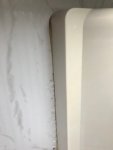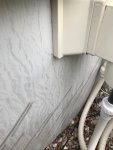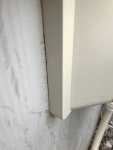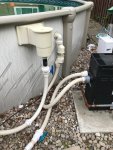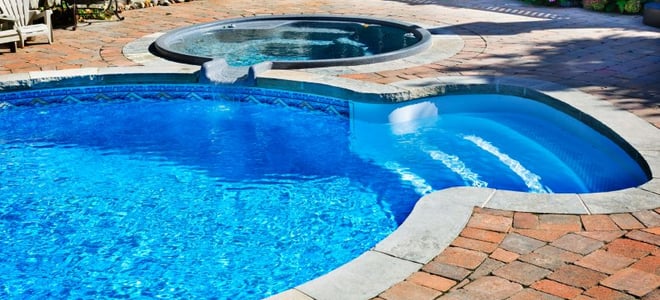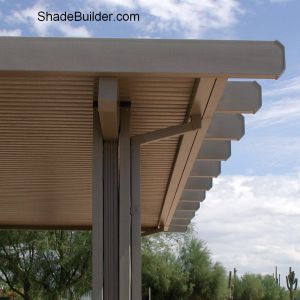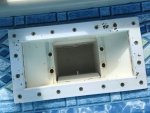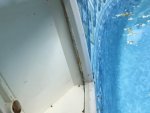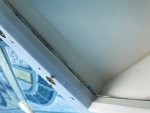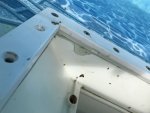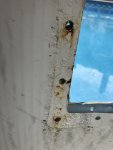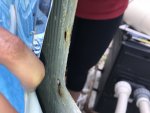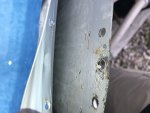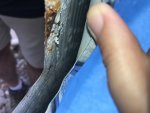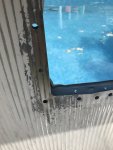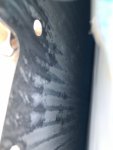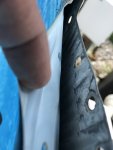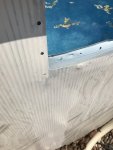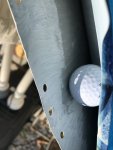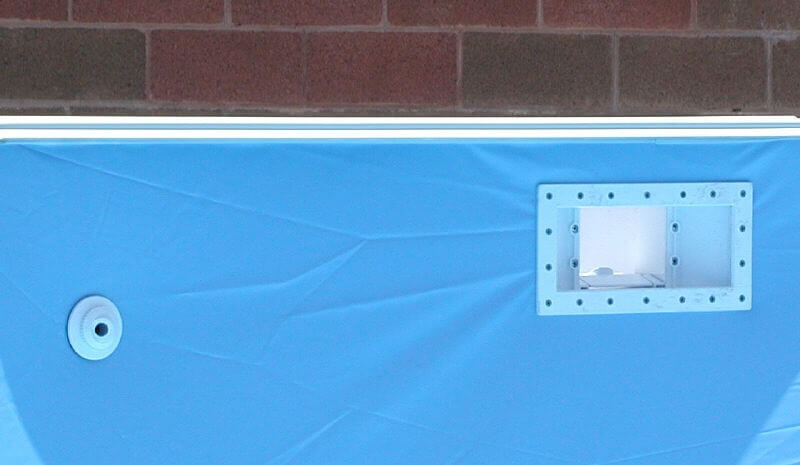Hi folks,
I'm trying to isolate the source of a leak in my above-ground pool. When I assembled my system and turned it on earlier this spring I was noticing the water levels dropping rapidly (noticeable within a day).
At first I was suspicious of the hose assembly coming down from the skimmer basket because it had a small o-ring that kept bulging and buckling whenever I tried to attach that joint. So I rebuilt and replaced that valve and hose assembly with one that I felt would be more robust.
Hoping that was my only problem, I went ahead and turned the system back on. Still, the level was noticeably dropping to the point where it would reach the bottom of the intake within a couple of days.
I'm not seeing any visual signs of water loss near the system - certainly not nearly enough to match how quickly the water level is dropping.
At this point I figured I would have to be more careful and precise in my method to isolate the source of the problem. I again shut the system off and the first thing I wanted to do was determine if it is a suction-side or pressure-side leak. So I am leaving the system turned off for now and I am taking measurements of water loss. Yesterday I re-added water to bring the level up about 3/4 of the height of the intake opening. I marked the level with some tape and I setup a plastic bucket of pool water next to the pool also marked with tape to measure loss from evaporation.
After 26 hours I took my first measurement and I see a drop of 14 mm in the pool and 3.3 mm in the bucket. Netting off the evaporation that's a drop of about 11 mm due to the leak. For my 21' diameter round pool, that works out to a loss of 344 litres (~91 gal) in 26 hours. That's like 14 litres (3.8 gal) per hour. At those volumes I should definitely be seeing something somewhere.
I've only taken one measurement so far and it was this evening. Earlier this morning when I was up for breakfast I visually looked out my window at the water level relative to the tape edge and I feel like it hasn't moved much between then and about 12 hours later when I actually took the measurement. I'm wondering if it hit a level and is staying there. I'll know more when I take another measurement tomorrow.
In the meantime, I went back and did another visual around the skimmer area. I am seeing some signs of salty sediment near the edge of the intake housing. I'm posting some close-up pictures here of what I'm talking about. Are these symptoms anything any of you have seen before? Might this be the evidence that I'm looking for that water is seeping out the side of the intake? Could it be getting in between the liner and pool wall hence making it so difficult for me to see the leaking water?
Anyway, this is clearly going to take some time to find and fix. I appreciate any and all tips I can get from your experiences. In the meantime as I work on this, my pool water is getting nice and green with the summer temperatures really starting to kick in now.
Thanks in advance for your help.
Denis
I'm trying to isolate the source of a leak in my above-ground pool. When I assembled my system and turned it on earlier this spring I was noticing the water levels dropping rapidly (noticeable within a day).
At first I was suspicious of the hose assembly coming down from the skimmer basket because it had a small o-ring that kept bulging and buckling whenever I tried to attach that joint. So I rebuilt and replaced that valve and hose assembly with one that I felt would be more robust.
Hoping that was my only problem, I went ahead and turned the system back on. Still, the level was noticeably dropping to the point where it would reach the bottom of the intake within a couple of days.
I'm not seeing any visual signs of water loss near the system - certainly not nearly enough to match how quickly the water level is dropping.
At this point I figured I would have to be more careful and precise in my method to isolate the source of the problem. I again shut the system off and the first thing I wanted to do was determine if it is a suction-side or pressure-side leak. So I am leaving the system turned off for now and I am taking measurements of water loss. Yesterday I re-added water to bring the level up about 3/4 of the height of the intake opening. I marked the level with some tape and I setup a plastic bucket of pool water next to the pool also marked with tape to measure loss from evaporation.
After 26 hours I took my first measurement and I see a drop of 14 mm in the pool and 3.3 mm in the bucket. Netting off the evaporation that's a drop of about 11 mm due to the leak. For my 21' diameter round pool, that works out to a loss of 344 litres (~91 gal) in 26 hours. That's like 14 litres (3.8 gal) per hour. At those volumes I should definitely be seeing something somewhere.
I've only taken one measurement so far and it was this evening. Earlier this morning when I was up for breakfast I visually looked out my window at the water level relative to the tape edge and I feel like it hasn't moved much between then and about 12 hours later when I actually took the measurement. I'm wondering if it hit a level and is staying there. I'll know more when I take another measurement tomorrow.
In the meantime, I went back and did another visual around the skimmer area. I am seeing some signs of salty sediment near the edge of the intake housing. I'm posting some close-up pictures here of what I'm talking about. Are these symptoms anything any of you have seen before? Might this be the evidence that I'm looking for that water is seeping out the side of the intake? Could it be getting in between the liner and pool wall hence making it so difficult for me to see the leaking water?
Anyway, this is clearly going to take some time to find and fix. I appreciate any and all tips I can get from your experiences. In the meantime as I work on this, my pool water is getting nice and green with the summer temperatures really starting to kick in now.
Thanks in advance for your help.
Denis


